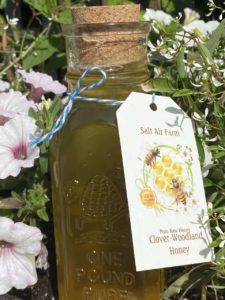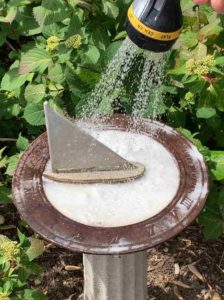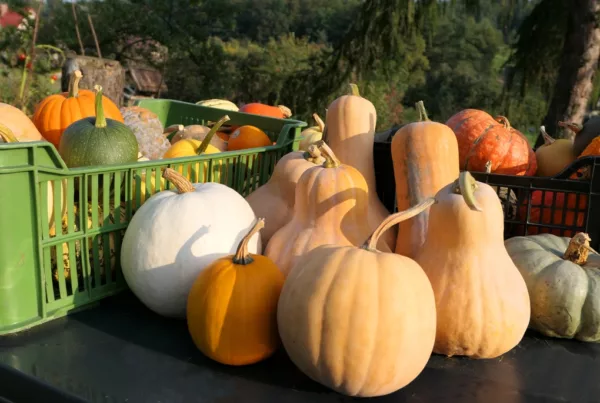Written by Laura Bartholomew
Steve and I recently visited Salt Air Farm on Long Island to learn more about bees and other pollinators so essential for our food production. My blog last month shared bee and wasp identification tips, and the important pollination work done by our tiny friends. With land that’s been in the family since the 1600s, owners Dan and Prudence Heston proudly join the generations of environmental stewards that have maintaineda Salt Air Farm for centuries.

Salt Air Farm Honey
I asked Prudence what our SFG community can do to help bees increase their population. Here’s what she shared:
Avoid pesticides and do not spray your lawn. If you find a hive that’s a nuisance, call your local county extension office to help with safe removal. Sprays used to kill ANY insect are also harmful to bees! If you must use a spray, use one that specifically states it will not kill bees and do it at night when bees aren’t active. This allows time for it to dry, making it less likely to stick to a pollinator’s legs.
Even homemade deterrents such as cayenne pepper sprays or garlic sprays may harm or keep away bees. This is another reason why Mel Bartholomew suggested keeping your Square Foot Garden small and close to the house: to keep an eye on any potential problems and hand pick pests or apply a row cover when necessary.
Plant colorful flowers. Bees are attracted to bright colors, so add some lovely flowers to your Square Foot Garden. We love alyssum, zinnias, marigold and celosia to name a few. Grow shorter varieties, or their height could shade other plants. PS – let those dandelions grow, bees love ’em!
Avoid bright colored clothes and perfumed soaps in the garden. Bees may think you are a flower that wants to be pollinated! Of course if you swat they will protect their territory, and we know what that means. Freshly laundered clothes – plus soaps, perfumes and shampoos – can tell a bee you’re a sweet-smelling flower. Skip the shower before heading out to the garden to reduce their curiosity.
Diversify your plantings. Add flowers and flowering shrubs to your garden along with a variety of crops. Bees prefer a variety of plants as opposed to mono-crops – and it’s healthier for them to have options.
Put out a bee bath! Bees need water for honey production and to keep their hive cool in summer. Fill a shallow waterproof bowl such as a birdbath, small tarp, 5-gallon bucket lid, etc. with clean sand almost to the top and add a shallow layer of water, just enough so bees can drink and not drown.

Bee Bath
Remember, bees are our friends and are essential to the food we eat. They also make honey, pollen (used as a vegetarian supplement), and wax for candles, lipstick, crayons, shoe/floor polish and more.
Let’s work together to ensure bees and other pollinators thrive for future generations. Bee kind (avoid poisons), bee happy (don’t swat and don’t get stung!), and bee thankful for the planet’s amazing workers that transform plants into our daily food.
Special thanks to Prudence Heston for sharing so much knowledge and time with us – and with you! Salt Air Farm, Cutchogue, NY. You can check them out here: https://www.saltairfarm.com/
See you in the garden …. Laura



